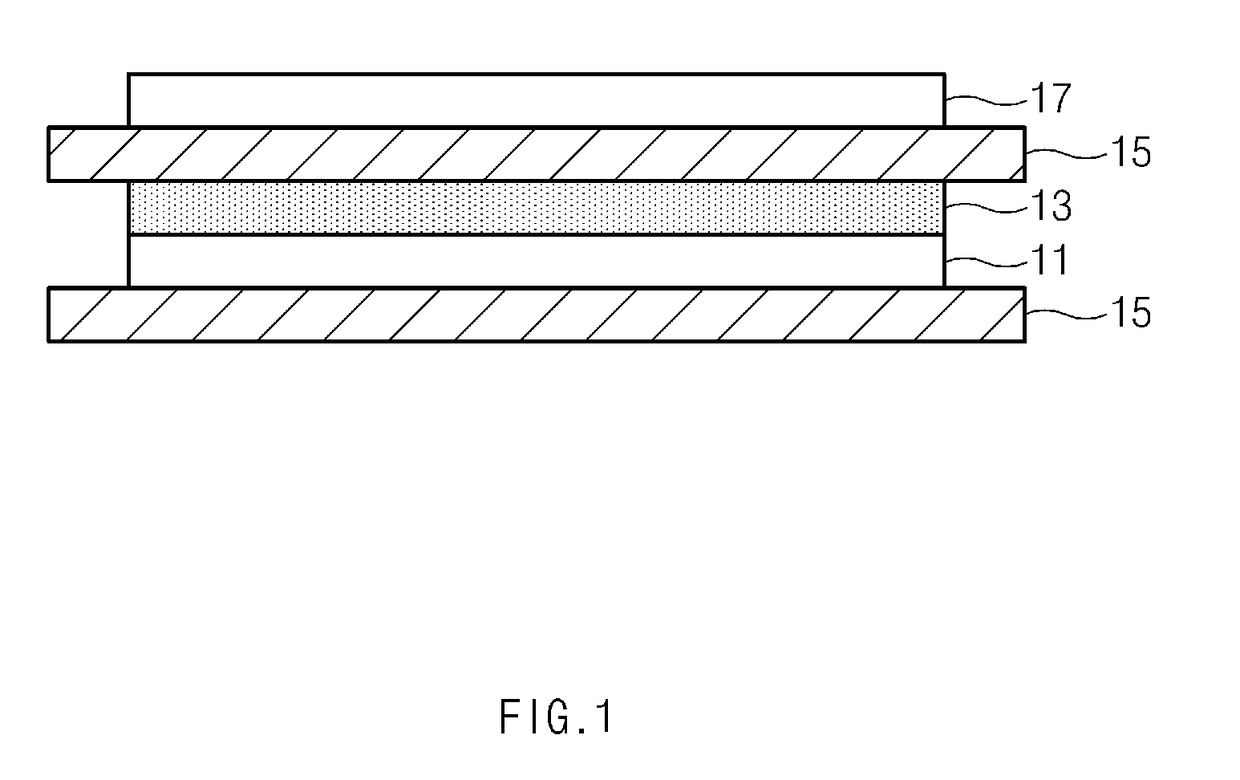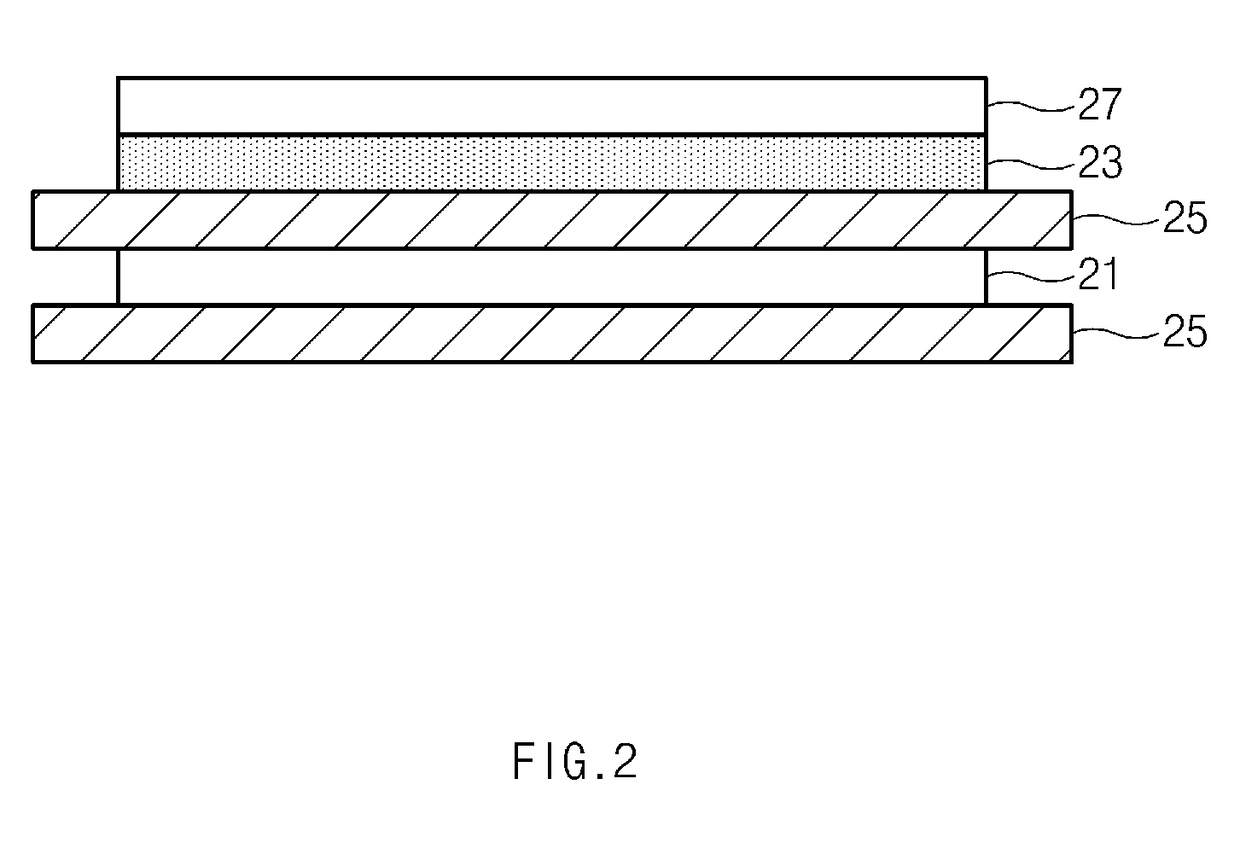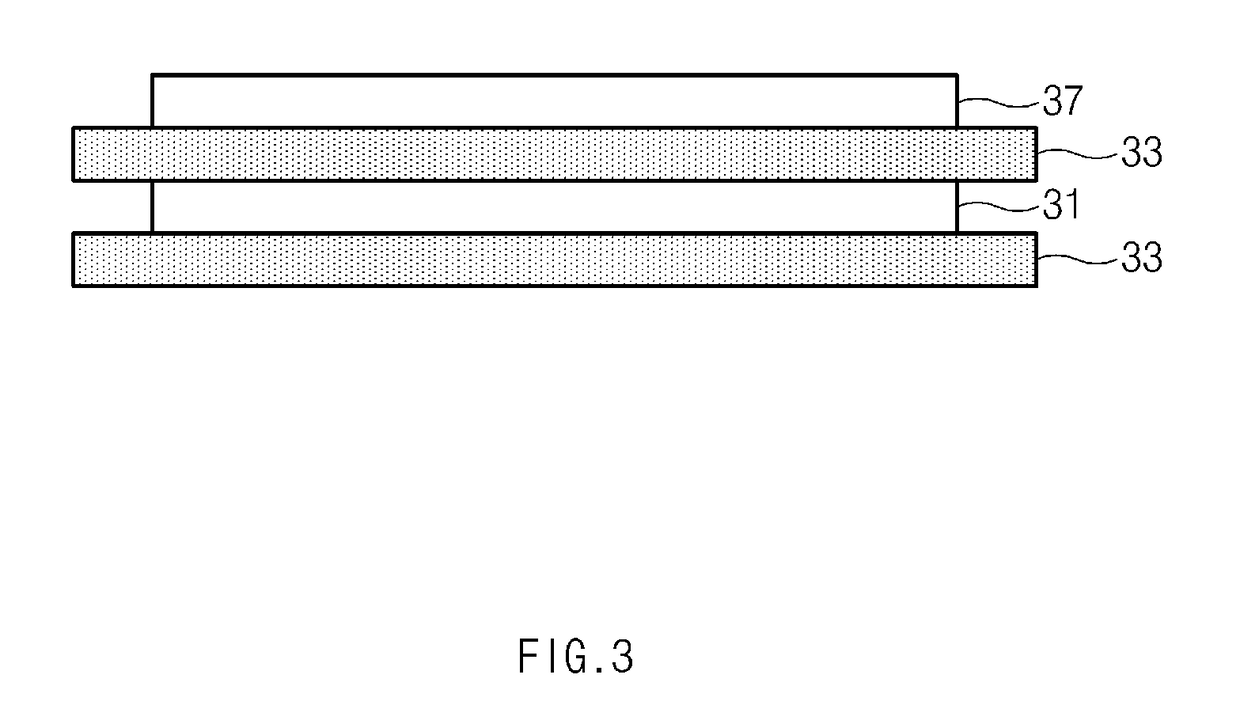Polymer Electrolyte And Lithium Secondary Battery Including The Same
a polymer electrolyte and secondary battery technology, applied in the field of polymer electrolyte having improved ionic conductivity and a lithium secondary battery, can solve the problems of self-discharge and heating of lithium batteries, low ionic conductivity at room temperature and low temperature, and achieve high ionic conductivity and improve electrochemical stability and life characteristics
- Summary
- Abstract
- Description
- Claims
- Application Information
AI Technical Summary
Benefits of technology
Problems solved by technology
Method used
Image
Examples
example 1
[0210]A positive electrode slurry was prepared by adding 92 wt % of a 4.2 V-class LiCoO2 compound as a positive electrode active material, 4 wt % of carbon black as a conductive agent, and 2 wt % of polyvinylidene fluoride (PVDF), as a binder component, to N-methyl-2-pyrrolidone (NMP) as a solvent.
[0211]A 20 μm thick aluminum (Al) thin film was coated with the positive electrode mixture slurry to a thickness of 10 μm and dried to prepare the positive electrode 27.
[0212]Subsequently, a coating solution was prepared by dissolving 2 g of the copolymer of Formula 2a (weight-average molecular weight (Mw) 10,000) and 0.22 g of a lithium salt (LiTFSI) (weight ratio of 9:1) in an N-methylpyrrolidone solvent (97.78 g). The coating solution was coated on a surface of the positive electrode and dried to prepare the polymer electrolyte 23 having a thickness of 1 μm.
[0213]A 20 μm thick copper foil was coated with 20 μm thick Li metal to prepare the negative electrode 21.
[0214]As illustrated in F...
example 2
[0215]A positive electrode slurry was prepared by adding 92 wt % of LiCoO2 as a positive electrode active material, 4 wt % of carbon black as a conductive agent, and 4 wt % of PVDF, as a binder component, to N-methyl-2-pyrrolidone (NMP) as a solvent. A 20 μm thick aluminum thin film was coated with the positive electrode mixture slurry to a thickness of 10 μm and dried to prepare the positive electrode 17.
[0216]A 20 μm thick copper foil was coated with 20 μm thick Li metal to prepare the negative electrode 11.
[0217]Subsequently, a coating solution was prepared by dissolving 2 g of the copolymer of Formula 2a (weight-average molecular weight (Mw) 10,000), 0.22 g of a lithium salt (LiTFSI) (weight ratio of 9:1), and 3 g of lithium lanthanum zirconate (LLZO) in an N-methylpyrrolidone solvent (94.78 g). The coating solution was coated on a surface of the negative electrode and dried to prepare the polymer electrolyte 13 having a thickness of 1 μm.
[0218]As illustrated in FIG. 1, an elect...
example 3
[0219]A battery was prepared in the same manner as in Example 2 except that Al2O3 was included instead of lithium lanthanum zirconate (LLZO) during the preparation of the polymer electrolyte in Example 2.
PUM
| Property | Measurement | Unit |
|---|---|---|
| weight ratio | aaaaa | aaaaa |
| total resistance | aaaaa | aaaaa |
| ionic conductivity | aaaaa | aaaaa |
Abstract
Description
Claims
Application Information
 Login to View More
Login to View More - R&D
- Intellectual Property
- Life Sciences
- Materials
- Tech Scout
- Unparalleled Data Quality
- Higher Quality Content
- 60% Fewer Hallucinations
Browse by: Latest US Patents, China's latest patents, Technical Efficacy Thesaurus, Application Domain, Technology Topic, Popular Technical Reports.
© 2025 PatSnap. All rights reserved.Legal|Privacy policy|Modern Slavery Act Transparency Statement|Sitemap|About US| Contact US: help@patsnap.com



